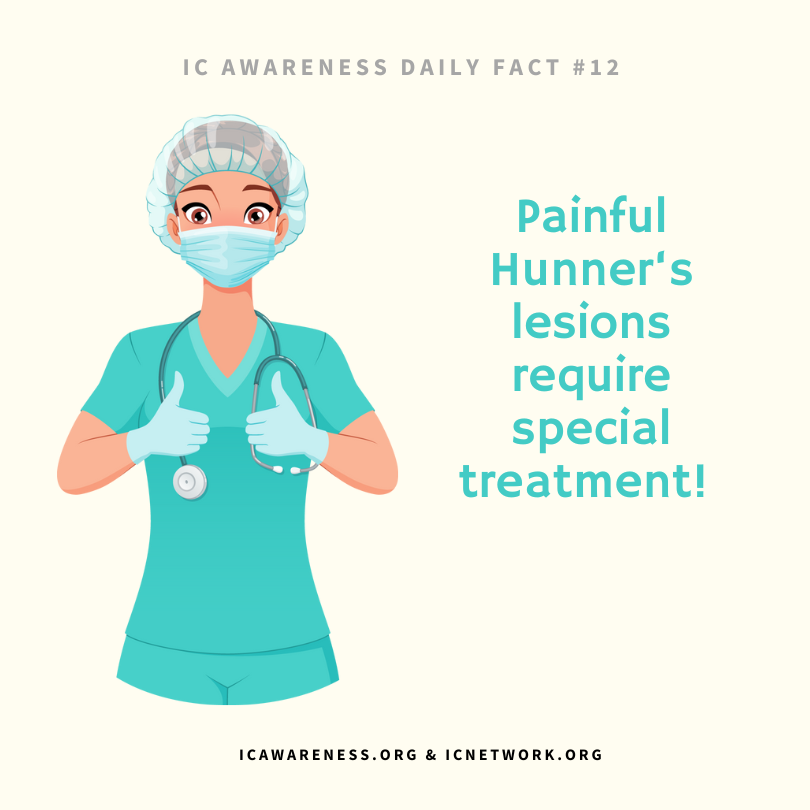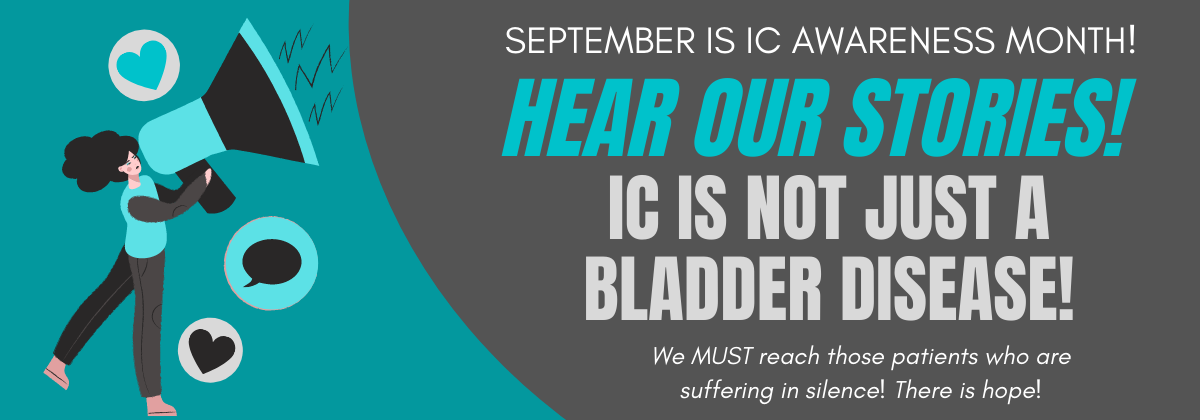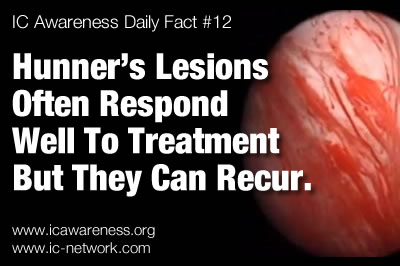
Approximately 15% of IC patients have profound, extremely painful areas of inflammation in the bladder wall known as Hunner’s Lesions (formerly Hunner’s Ulcers). These larger, bleeding wounds in the bladder represent the most severe form of interstitial cystitis and bladder pain syndrome. Research released in 2014 (Van Der AA, et al. ) found that Hunner’s lesions patients had the polyoma virus in their urine. A new study released in September 2015 (Winter BJ, et al.) also found the virus in lesion patients and determined that the use of an older, rarely used therapy, Clorpactin, has an anti-DNA viral effect. More research is clearly needed but perhaps that would be a new use for a therapy that has largely been abandoned because of its caustic effects.
Hunner’s lesions must be diagnosed through cystoscopy, often utilizing hydrodistention. Unfortunately, many patients don’t realize that Hunner’s ulcers require separate bladder wall specific treatment.
PATIENT TIP – If you are going to have a hydrodistention, it’s important to talk with your doctor about how they will be treating any ulcers they find. To NOT treat an ulcer is a lost opportunity that could result in long periods of pain and discomfort and require additional hydrodistention.
The AUA Treatment Guidelines outline current treatments for Hunner’s lesions including: fulguration, laser therapy and/or the injection of triamcinolone into the center of the ulcer. New research has also found that hyperbaric oxygen therapy and/or platelet rich plasma may be helpful though these require additional studies. Click here to read more and review the research.
TikTok Video
@icnetworkjill IV Aeareness Daily Fact 12 – Hunner’s lesions can cause severe pain but respond well to trratment. There is hope! #ictok #icawareness ♬ original sound – IC Network
Past Images

